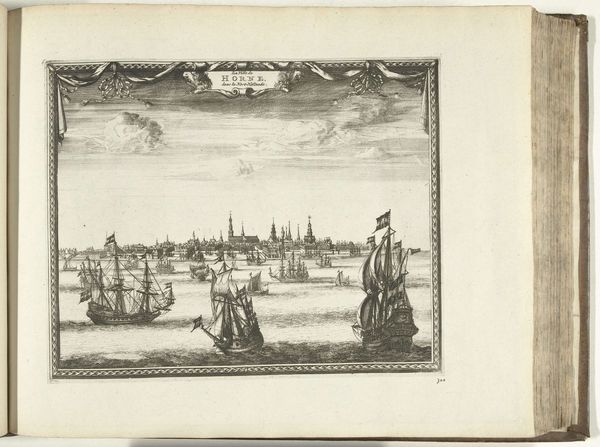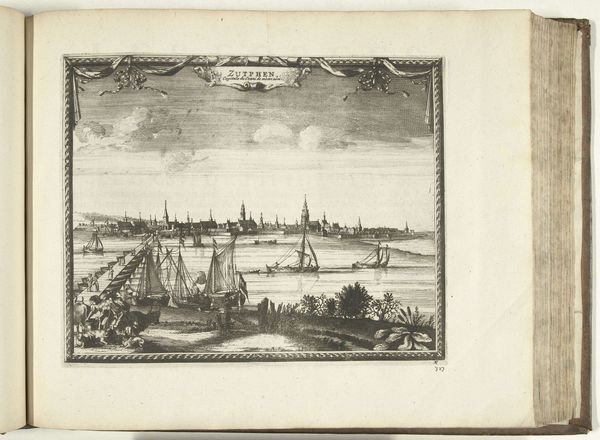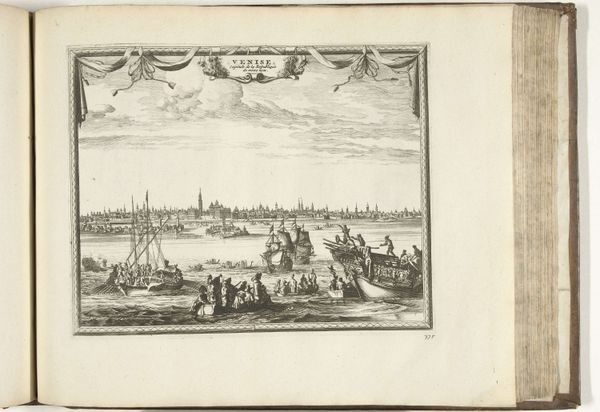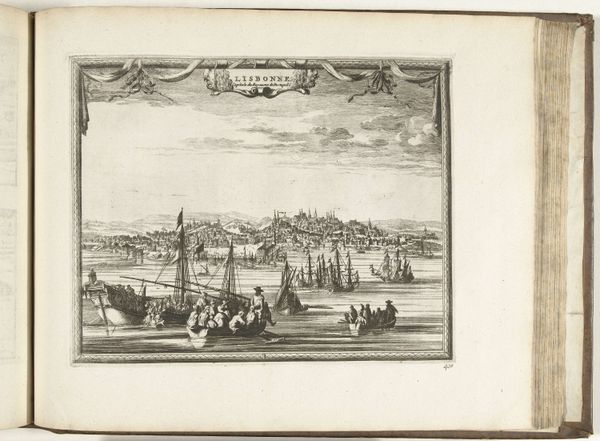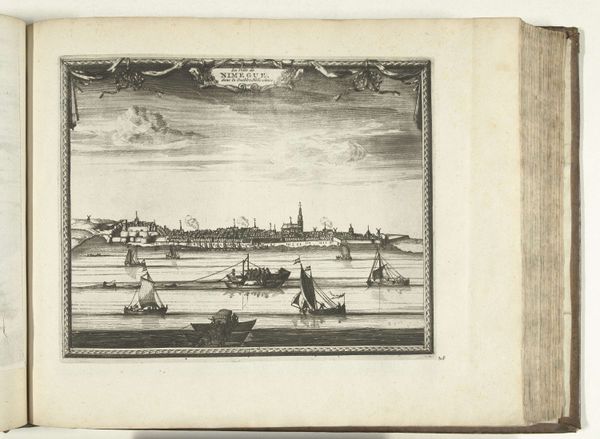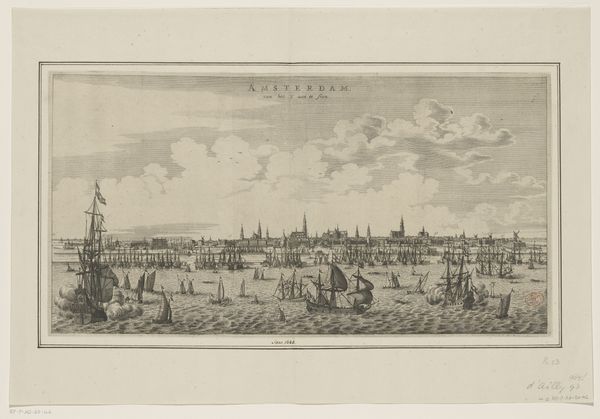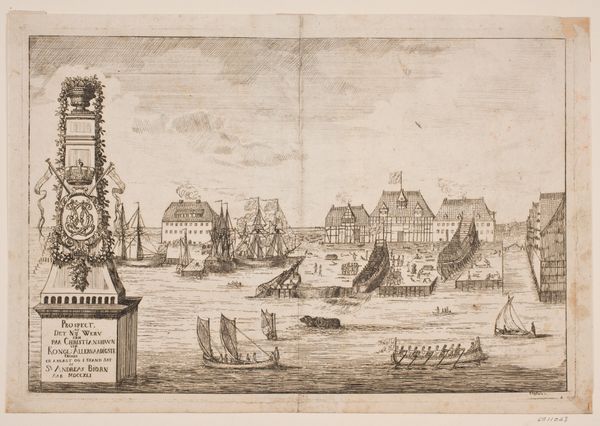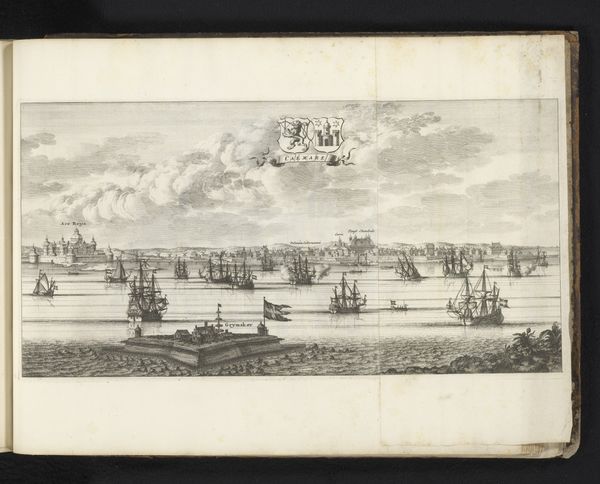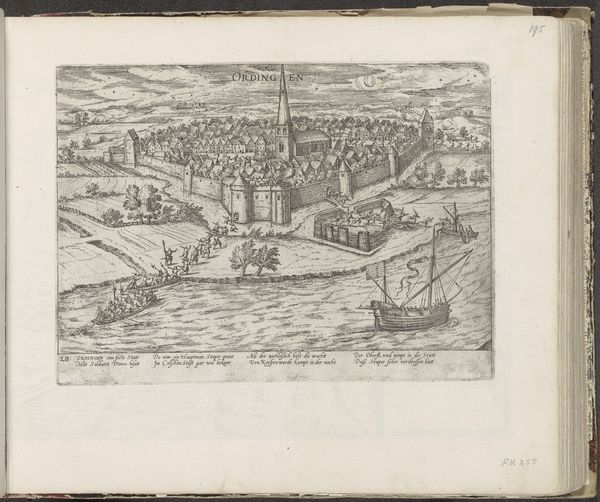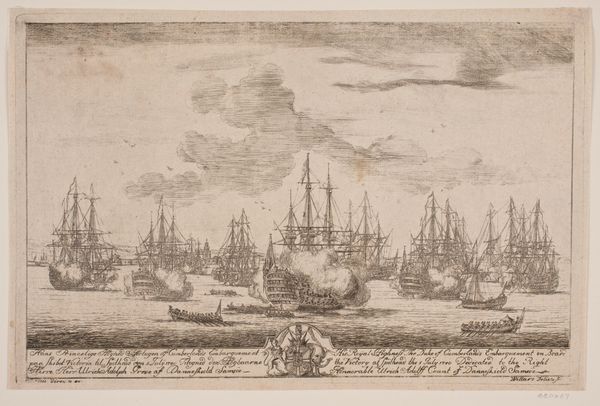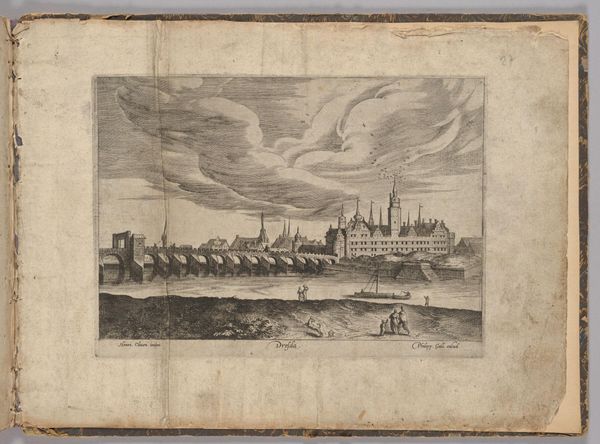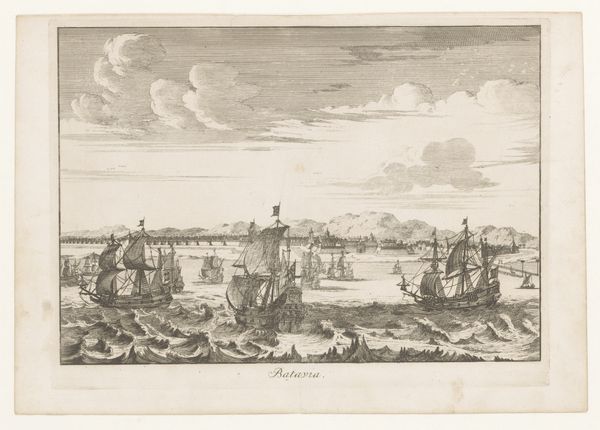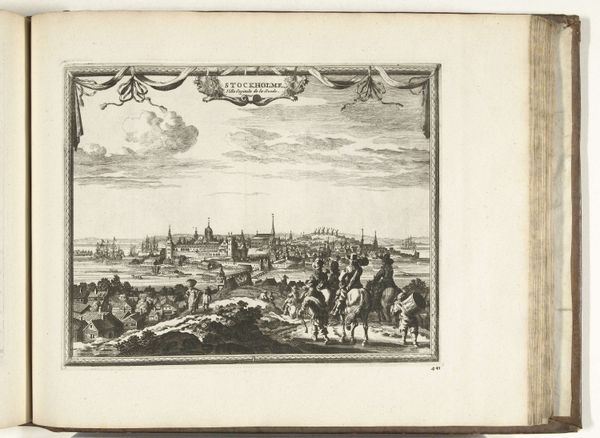
print, engraving
#
baroque
# print
#
landscape
#
cityscape
#
engraving
Dimensions: height 225 mm, width 278 mm
Copyright: Rijks Museum: Open Domain
Editor: Here we have "Gezicht op Duinkerke, 1726", a print by an anonymous artist, housed at the Rijksmuseum. It has a rather stark quality to it, all in black and white, depicting ships at sea near a city. The repetition of the waves and buildings gives a sort of rigid feel to the landscape. What stands out to you most when you look at it? Curator: What immediately catches my attention is the strategic and political positioning of Dunkirk within its historical context. Prints like this weren't just aesthetic exercises. Consider Dunkirk's history—a strategic port, frequently contested between powers like France, Spain, and England. This image, published in 1726, places Dunkirk firmly in the visual rhetoric of power. Who commissioned it, and for what purpose? These images served as visual propaganda, reinforcing the authority and territorial claims of the ruling power. Editor: So you're saying this wasn’t simply meant to be a pretty picture? Curator: Exactly. Think about the intended audience. Prints were relatively accessible, and widely circulated. This image normalizes Dunkirk as a *possession*. The details - the well-ordered city, the ships seemingly at bay, and the fortifying geography – all contribute to this narrative. Even the frame contributes to this ownership. Notice also, how the harbor itself is teeming with naval activity – reinforcing its strategic importance. It prompts a critical assessment of the social function this image served. Editor: That’s fascinating; I never thought about it that way. I was so focused on the artistry. It is intriguing to view it as almost an early form of geopolitical communication, solidifying political claims through visual representation. Curator: Precisely! We learn to investigate the power dynamics at play in the creation and distribution of images. It shapes how we interpret not just this single image, but entire genres of historical art. Editor: Thanks; I'll certainly view similar works with a more critical, historically aware eye now.
Comments
No comments
Be the first to comment and join the conversation on the ultimate creative platform.
